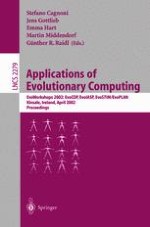2002 | Buch
Applications of Evolutionary Computing
EvoWorkshops 2002: EvoCOP, EvoIASP, EvoSTIM/EvoPLAN Kinsale, Ireland, April 3–4, 2002 Proceedings
herausgegeben von: Stefano Cagnoni, Jens Gottlieb, Emma Hart, Martin Middendorf, Günther R. Raidl
Verlag: Springer Berlin Heidelberg
Buchreihe : Lecture Notes in Computer Science
Enthalten in: Professional Book Archive
